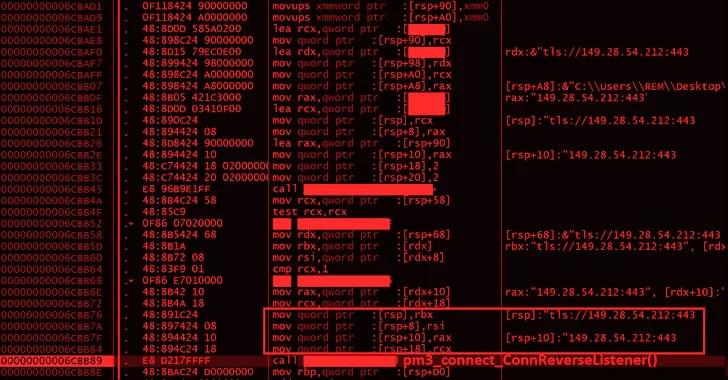Since July 2024, a phishing campaign in Poland and Germany has used PureCrypter to deploy TorNet via TOR, evading cloud antimalware with advanced anti.
Threat actors exploit ESXi systems as C2 tunnels, leveraging SSH for stealthy persistence, Sygnia reports.
HackGATE transforms pentesting with real-time visibility, 65% vendor reliance reduction, and enhanced compliance.
Google announced that the Chrome Sync feature will be discontinued in early 2025 for Chrome versions older than four years.
When enabled, Chrome Sync keeps users’ bookmarks, passwords, history, open tabs, settings, preferences, and, sometimes, Google Pay payment information. It also automatically signs users into Gmail, YouTube, Search, and other Google services.
The move was announced on the company’s community website over the weekend via a locked post that doesn’t accept replies.
A team of security researchers has disclosed new side-channel vulnerabilities in modern Apple processors that could steal sensitive information from web browsers.
The Georgia Institute of Technology and Ruhr University Bochum researchers, who presented another attack dubbed ‘iLeakage’ in October 2023, presented their new findings in two separate papers, namely FLOP and SLAP, which show distinct flaws and ways to exploit them.
The flaws stem from faulty speculative execution implementation, the underlying cause of notorious attacks like Spectre and Meltdown.
Microsoft has started testing a new “scareware blocker” feature for the Edge web browser on Windows PCs, which uses machine learning (ML) to detect tech support scams.
Scareware scams (also known as tech support scams) have been a pervasive threat for years. The scammers use aggressive landing pages to persuade potential victims that their devices have been compromised with malware and then try to gain remote access to targets’ systems by pressuring them to call a fake tech support number.
Defender SmartScreen, which also protects Edge users from scams, activates after an abusive site is detected and added to its index of malicious web pages to safeguard users globally within minutes.
Scientists have unveiled a groundbreaking method to test how thousands of active substances influence cellular metabolism simultaneously.
By using high-throughput metabolomics and mass spectrometry, they identified unexpected effects of existing medications, paving the way for repurposing drugs and accelerating drug discovery. This approach could one day align patient-specific metabolic data with tailored treatments.
Understanding active substances and cell metabolism.
Today we’re announcing ChatGPT Gov, a new tailored version of ChatGPT designed to provide U.S. government agencies with an additional way to access OpenAI’s frontier models.
Agencies can deploy ChatGPT Gov in their own Microsoft Azure commercial cloud or Azure Government cloud on top of Microsoft’s Azure’s OpenAI (opens in a new window) Service. Self-hosting ChatGPT Gov enables agencies to more easily manage their own security, privacy, and compliance requirements, such as stringent cybersecurity frameworks (IL5, CJIS, ITAR, FedRAMP High). Additionally, we believe this infrastructure will expedite internal authorization of OpenAI’s tools for the handling of non-public sensitive data. Use of ChatGPT Gov is subject to our usage policies, like other OpenAI services.
Did Mars have lakes and rivers during a single period or over separate periods? This is what a recent study published in Nature Geoscience hopes to address as an international team of researchers investigated whether Mars experienced a single event of liquid water on its surface, or many events spread over millions of years. This study has the potential to help scientists better understand the early conditions on Mars and whether these conditions were suitable to support life as we know it.
“Early Mars is a lost world, but it can be reconstructed in great detail if we ask the right questions,” said Dr. Robin Wordsworth, who is a Gordon McKay Professor of Environmental Science and Engineering at Harvard University and a co-author on the study. “This study synthesizes atmospheric chemistry and climate for the first time, to make some striking new predictions – which are testable once we bring Mars rocks back to Earth.”
For the study, the researchers used a series of computer models to simulate how the atmosphere on Mars billions of years ago potentially reacted to surface water-rock interactions and climate changes over time. The goal was to ascertain whether Mars experienced a single event of liquid water on its surface, or a series of events spread over millions of years with periods of dryness in between them.
Dr. Armour, in 1991, discovered that the heart has its “little brain” or “intrinsic cardiac nervous system.” This “heart brain” is composed of approximately 40,000 neurons that are alike neurons in the brain, meaning that the heart has its own nervous system. In addition, the heart communicates with the brain in many methods: neurologically, biochemically, biophysically, and energetically. The vagus nerve, which is 80% afferent, carries information from the heart and other internal organs to the brain. Signals from the “heart brain” redirect to the medulla, hypothalamus, thalamus, and amygdala and the cerebral cortex. Thus, the heart sends more signals to the brain than vice versa. Research has demonstrated that pain perception is modulated by neural pathways and methods targeting the heart such as vagus nerve stimulation and heart-rhythm coherence feedback techniques. The heart is not just a pump. It has its neural network or “little brain.” The methods targeting the heart modulate pain regions in the brain. These methods seem to modulate the key changes that occur in the brain regions and are involved in the cognitive and emotional factors of pain. Thus, the heart is probably a key moderator of pain.









